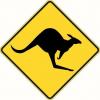
Originally Posted by
Charles Guest

Some nuance is needed here, rather than glibly posting some photos of ash in a sort of state though I'm not sure what.
Not all ash is a bear to plane. Some, really most, is easily or fairly easy under plane. But what I believe the OP has in his shop, and some I've had to deal with, is a different beast altogether. I don't know what happens to it while it's growing -- maybe in standing water, on the side of hill, in severe drought. Don't know. But whatever it is, it's not good. It's usually really attractive and that's the allure of trying, wanting, to deal with it.




 Reply With Quote
Reply With Quote











